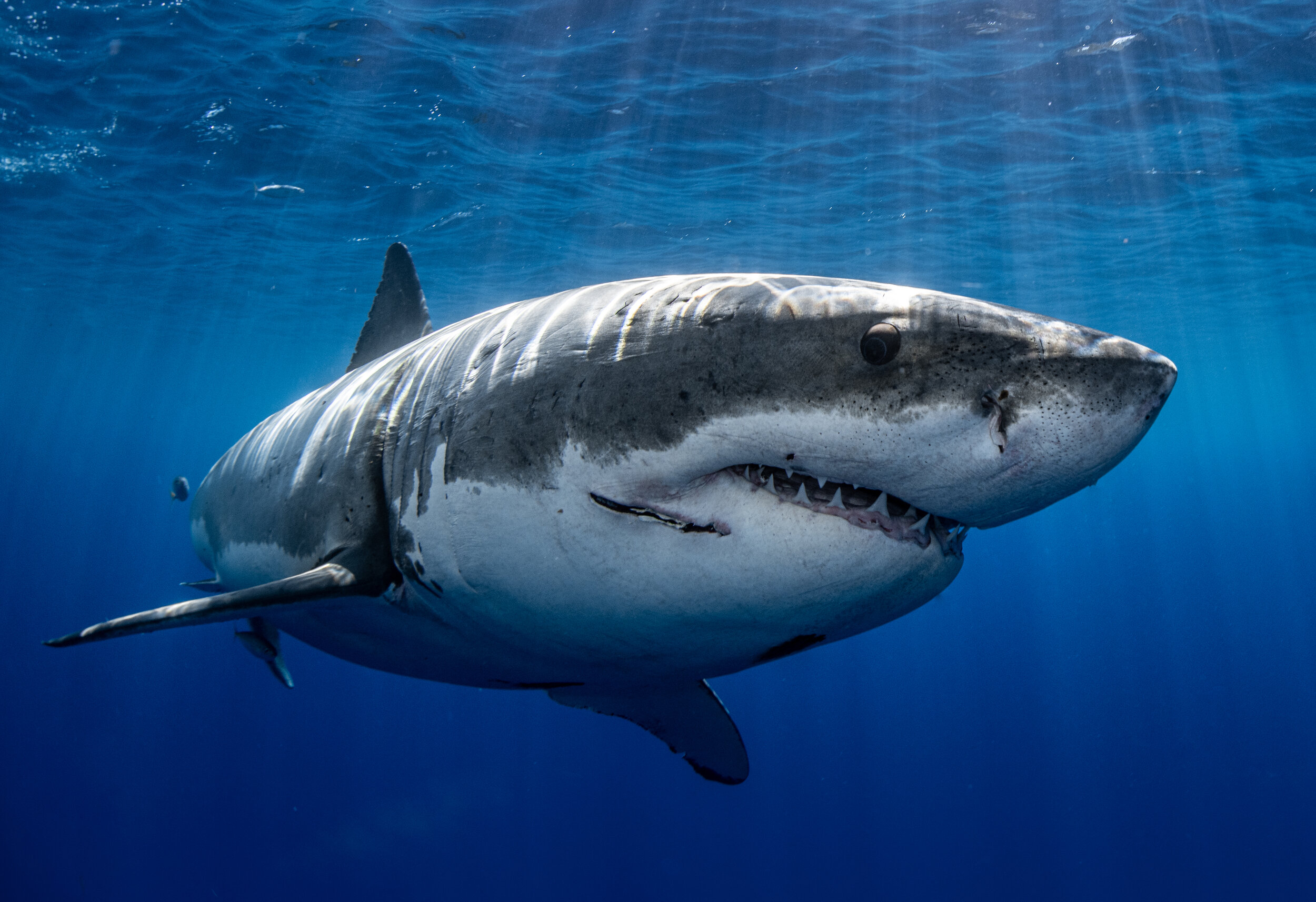Shark Eyesight
The hammerhead is best known for its unique head shape and excellent 360 vision, which gives them a better visual range than most other sharks - so they can see above and below them at all times. Although this doesn’t mean they have perfect vision, they do have a huge blind spot right in front of their nose.
Image by Hanan Atia
A great white shark also has great vision that it uses to its advantage. The retina of its eyes is divided into two areas - one adapted for vision throughout the day and, the other for low-lighting and night. To protect themselves, they can roll their eyes back into the socket when they are feeling threatened during attacks or feeding time.
Those are two of my favorite species of shark and they have such brilliant advantages in their vision. All sharks are different in comparison especially when it comes to their eyesight, each one more unique than the other. For example, the size of the eye the shark has depends on its habitat. A lot of sharks that stay near the surface have evolved to hunt in the daylight and rely on their vision more than other senses, so these species will have larger eyes such as the bigeye thresher.
There are sharks that live in shallow water on the seafloor and they often have the smallest of eyes because floating sediment kicked up from the bottom can block their vision. These are animals which rely on senses like smell and electroreception over vision.
Some deep-sea sharks also have bigger eyes to pick up faint traces of light in the darkness but their eyes are filled with light-sensing rods and have less color-sensing cones.
Since their eyes are positioned on the side of their head, they are able to see near all directions. But, their vision becomes more accurate 15m from an object. And this is usually the point that sight becomes their most dominant sense from the rest. Like cats, sharks also have a tapetum lucidum. This is a reflective layer of shiny cells that lies behind the retina. This improves their vision in darker water conditions, allowing the nocturnal and deep-water species to hunt effectively. Although, since this improves their eyesight in the dark water they cannot see very clearly in normal lighting. It also gives their eyes a green glow in the dark which I find intriguing.
A long time ago sharks were once thought to be blind creatures that were relying completely on their scent, this has been proven to be false. These are stunning creatures with such a great ability to see in a range of different light conditions. This is an incredible insight into how sharks live their lives in open water. Sharks can change their field of vision from being stereoscopic to monocular. Stereoscopic vision is the ability to see in three dimensions, just like humans can. Monocular vision is when the shark uses only one of its eyes.
Sharks have eyelids visible just like humans althoug they generally use different methods to protect their eyes. The first method is by a nictitating membrane, which acts as a shield during hunting and fighting. This is a visible but transparent membrane that slides from under the eyelid to cover the eyeball. The second method is used by one of my favorites, the great white. This involves rolling its eyes back during attacks. Therefore, they make use of their electroreception and chemoreception during these attacks.
Written by Ashleigh Slider
Bard Optical. (2019). What Studies Have Revealed About Shark Eyes. [online] Available at: https://www.bardoptical.com/what-studies-have-revealed-about-shark-eyes/ [Accessed 1 Oct. 2021].
Sharks Info. (n.d.). Do Sharks Have Good Eyesight? [online] Available at: https://sharksinfo.com/sight-html/ [Accessed 1 Oct. 2021].
The Shark Trust. (n.d.). Shark Senses. [online] Available at: https://www.sharktrust.org/shark-senses#:~:text=With%20eyes%20positioned%20on%20the [Accessed 1 Oct. 2021].





